ETX-70AT observing and iPhone Moon imaging
Posted: 14 July 2016
|
Open: Wednesday, 13 July 2016, 1900 MST Temperature: 99°F |
Session: 999 Conditions: Mostly clear |
Equipment Used:
ETX-70AT
1.25" 25mm eyepiece
1.25" 26mm eyepiece
1.25" 3X TeleXtender
Camera:
iPhone 6s Plus
Set up my 15 year old Meade ETX-70AT on the observatory patio:
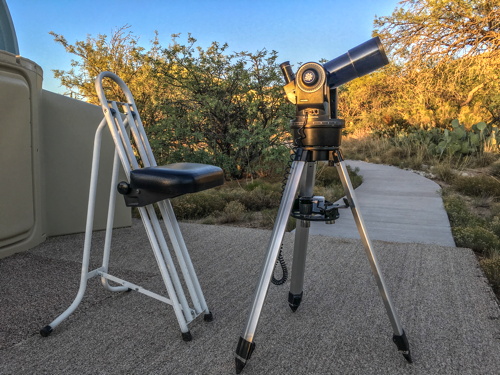
1935 MST: sunset. Took this iPhone photo of a Monsoon storm south of Cassiopeia Observatory near the Mexico-Arizona border:
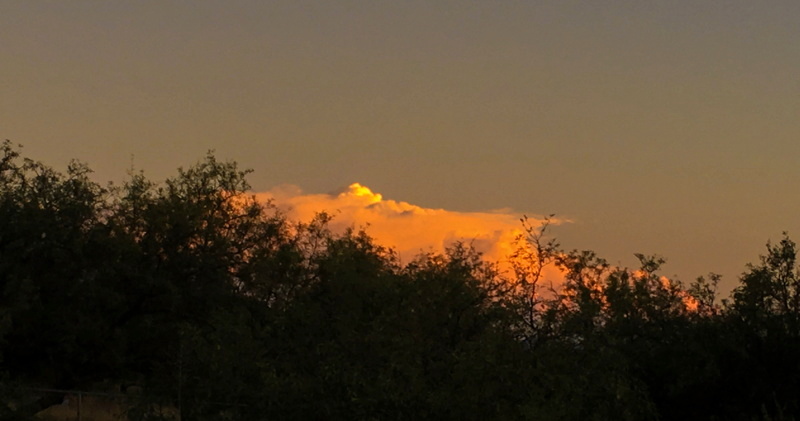
ETX-70AT ON. Faked the star alignment as no stars were yet visible. Viewed the waxing gibbous Moon, 14X and 42X. Lovely views. Then set up for iPhone 6s Plus imaging of the Moon. Mounted the iPhone on the ETX-70AT using the Orion SteadyPix Universal Smartphone Telescope Photo Mount with a 26mm eyepiece yielding 13X. The iOS Camera app overexposed the Moon due to all the dark area in the eyepiece field-of-view. Used the iOS app NightCap Pro, which allows more control over the exposure, for this afocal 13X image:
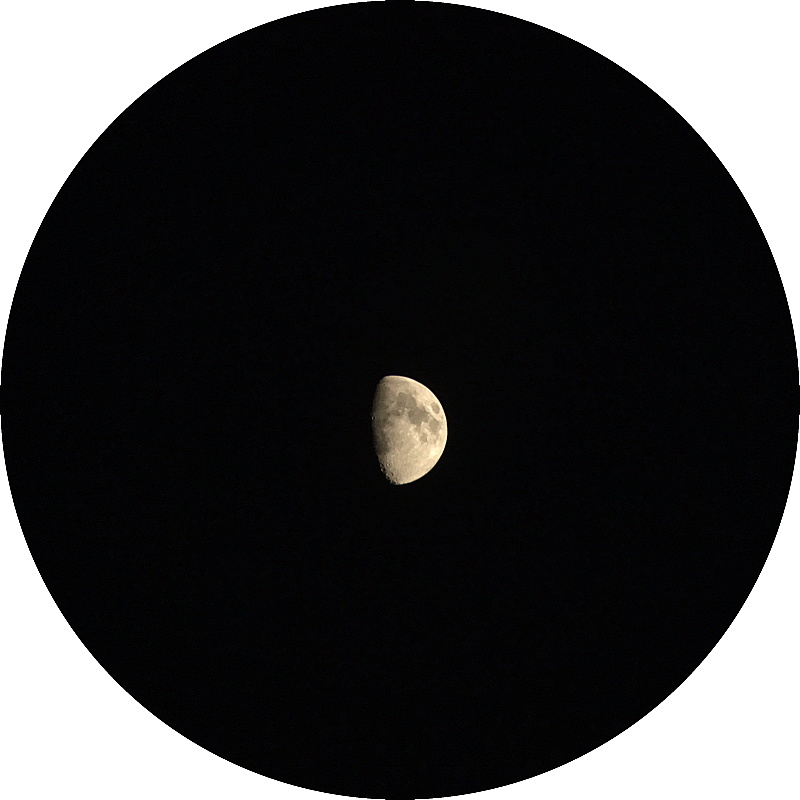
Added the 3X TeleXtender yielding 40X for this image of the Moon taken using the Camera app (which did not overexpose the Moon with the additional magnification):
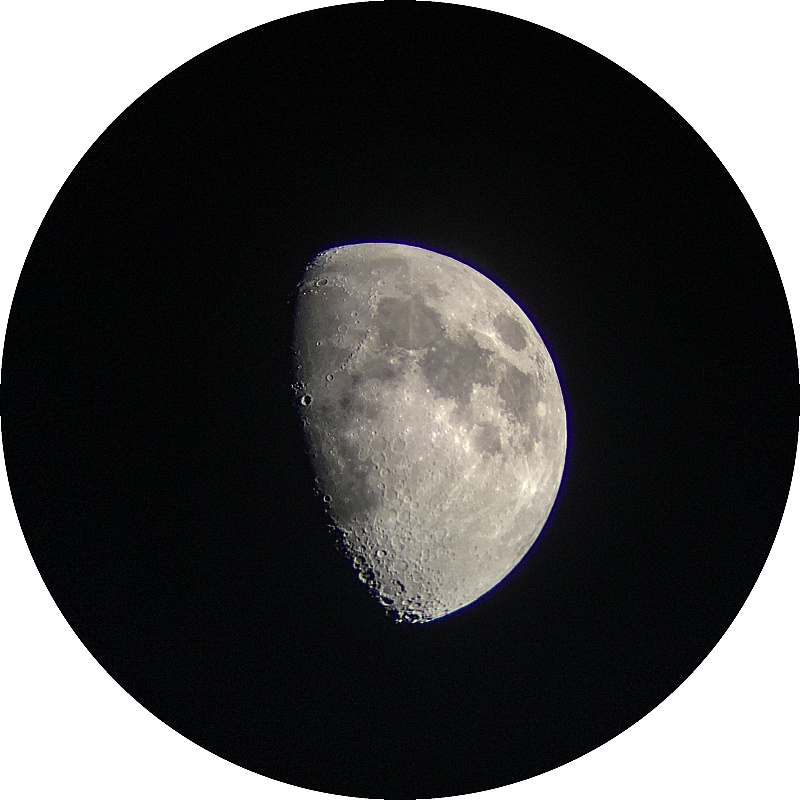
I used the Apple Watch as a remote shutter release for both apps. This is how the Moon appeared live on the Watch with the Camera app (40X):
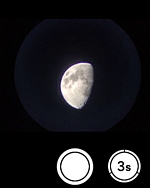
Did some lunar observing, 40X. Removed the SteadyPix and 26mm eyepiece. Switched to the 25mm eyepiece (14X) and SYNCed the AutoStar on the star Spica to improve the star alignment.
Viewed Jupiter, 14X. Two moons were visible but no cloud bands were visible. Added the 3X TeleXtender for 42X; could now see the four Galilean Moons and some cloud bands on the planet's disk.
Viewed Mars, 42X. No surface details were visible but the reddish color and the gibbous phase were evident.
Then viewed Saturn, 42X. The Ring and the moon Titan were visible. But there was not enough magnification to see Cassini Division this night.
The last object viewed with the ETX-70AT this night was the fine double star Albireo, 42X. The different star colors were obvious in the ETX-70AT.
2017 MST: ETX OFF. Began closing up for the night.
|
Close: Wednesday, 13 July 2016, 2025 MST Temperature: 82°F |
Session Length: 1h 25m Conditions: Mostly clear |
Comments are welcome using Email. Twitter users can use the button below to tweet this report to your followers. Thanks.
Cassiopeia Observatory Home Page
Copyright ©2016 Michael L. Weasner / mweasner@me.com
URL = http://www.weasner.com/co/Reports/2016/07/14/index.html
